|
Base Drawer Cabinets
A 'Base Drawer Cabinet' comes complete with all screws and hardware required to assemble the cabinet.
Note: In your order you will find the paperwork on your job, and in there is a detailed Assembly Instruction sheet, which explains 'which screw attaches to what and how many'.
Assembly process:
1. Attach the Leg Bases to the bottom of the Cabinet. Click the button below to show you how it's done:
2. Attach the Drawer Slides to the Ends (Gables). Click the button below to show you how it's done:
4. Join the Bottom (base) to a cabinet End (also known as a 'Gable'). Use the correct screw as identified in the detailed Assembly Instruction sheet (normally a 50mm screw). The joints are all butt joined, as the screws act as a steel dowel to secure the pieces together.
Note: A machined location hole is drilled into the bottom front section of the End itself, and this is to identify the bottom of the End Front.
TIP: Make sure that when fixing the End to the Bottom, that this hole is at the bottom.
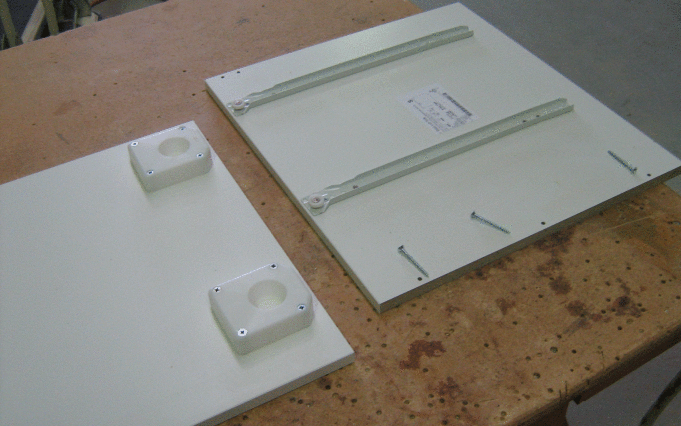
5. Join the remaining End (Gable) to the Bottom (Base) of the Cabinet.
Note: The image below has a sink bowl cut out in it, as this was a special request from the customer; yours will not have this.
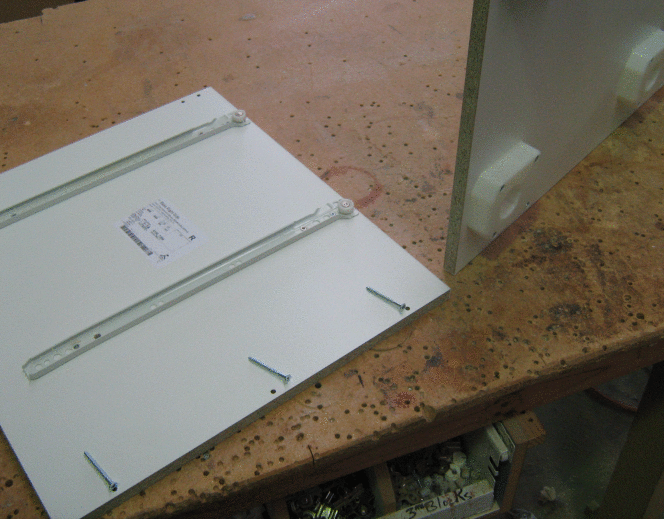
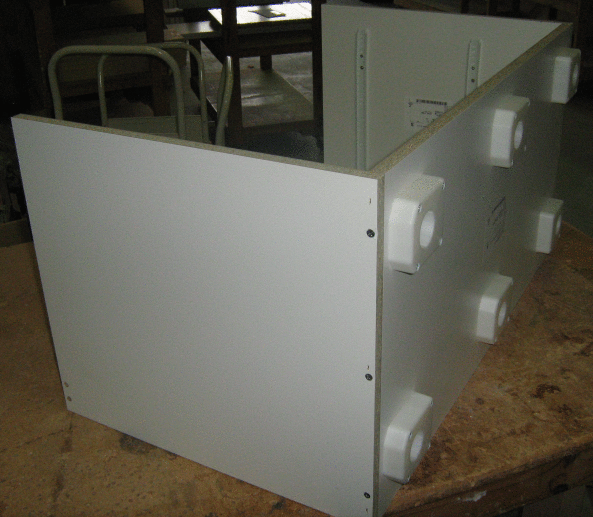
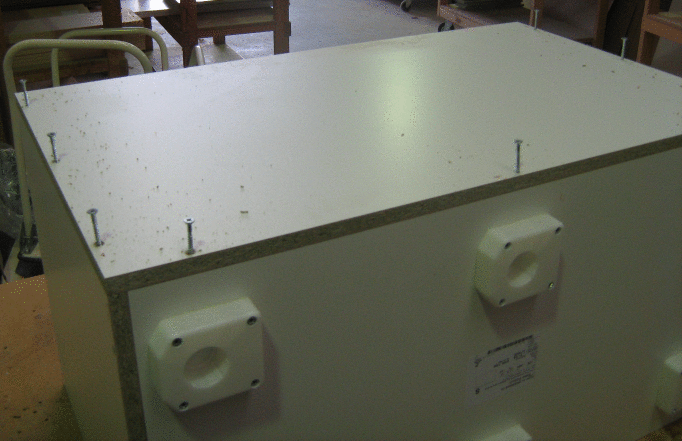
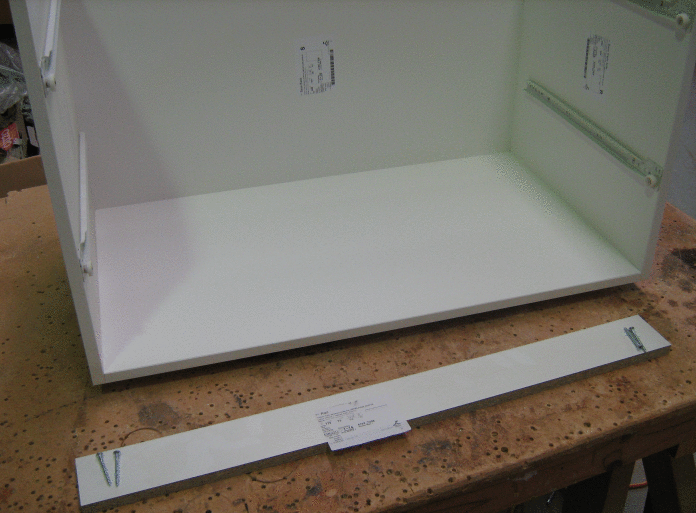

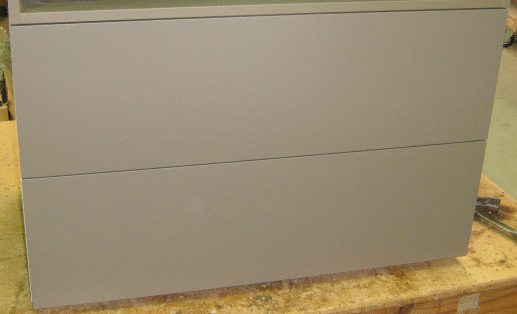
We hope that this information has been helpful for you.
If you need further help or more information on this topic please:
|
|

